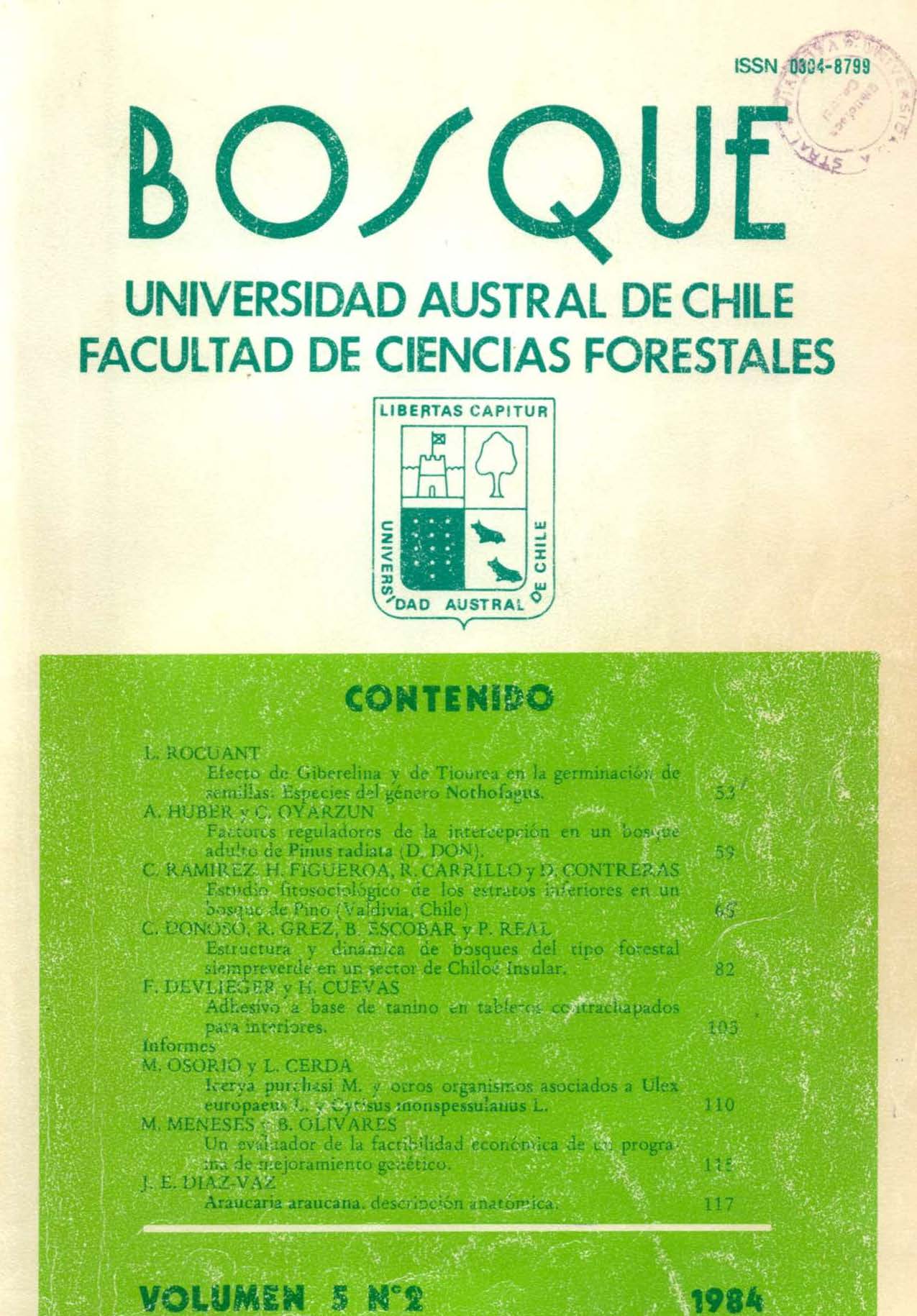Estudio Fitosociológico de los Estratos Inferiores en un Bosque de Pino (Valdivia, Chile)
Main Article Content
Abstract
The cultivated areas of Pinus radiata, are constantly increasing. Either unforested lands or, second-growth native forest are displaced. The requirements and autoecology of this species are known, but there is little information concerning the floristic structure and vegetation ecology of the articial forested ecosystems which the species forms. Thus, a study of the phytosociological structure and the microdistribution of the species in the undergrowth of a pine plantation in the X t h region in Chile was carried out.
400 vegetation samples were taken in plot of 100 m2 at a 27 year old forest plantation, "Huape Tres Esteros" which is located 20 km north of Valdivia. The structure of the undergrowth was related to the density of the plantation. The phytosociological table was statistically treated through cluster analyses, principal components analysis and canonical correlations.
55 native and 10 introduced species occurred in the sample. The most important of these were: Aristotelia chilensis, Rubus constrictus, Chusquea quila, Boquila trifoliata and Nertera granadensis. The undergrowth did not correspond to the original native forest but to second-growth brush of the Fuchsio-Chusqueetum quilae and Rhaphitamno-Aristotelietum associations. A negative correlation between number of species, total coverage, abundance of Aristotelia chilensis and the density of the pine trees was detected. Chusquea quila did not present this relation. Therefore, it is assumed that its distribution depends more on the edaphic humidity. Rubus contrictus is more abundant at drier sites. These results are confirmed by the multivariate statiscal analysis and are discussed in the text.

